Heart, blood vessels and cholesterol

How to detect heart attack and stroke in time? Fight for life
Heart attack and stroke are common diseases and causes of sudden death. Their early recognition can save health and life.
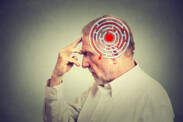
What diseases do lay people often confuse stroke with?
In the world there are diseases with common features. Therefore, it is not always easy to distinguish them from each other. Often, because of this, the patient is incorrectly treated. Differential diagnosis is a procedure involving examination methods that help the doctor to establish the correct diagnosis.

What is blood poisoning - sepsis? What are its symptoms, how does it proceed?
Sepsis, which is more commonly known to the public as blood poisoning, is one of the most important problems in medicine today. It is a serious complication of multiple morbid conditions and is characterised by a high mortality rate, with statistics indicating a mortality rate of up to 50%.

Do you know how to use a blood pressure monitor correctly and how to measure blood pressure?
Until recently, the blood pressure monitor was a professional device used exclusively by doctors. Now, however, it has made its way into the home of almost every layman. Regular blood pressure measurement in patients with arterial hypertension is of great benefit. Who should measure their blood pressure, when and how?

Congenital Cardiac Defects: Classification of Heart Defects, Symptoms
Congenital heart defects arise even during intrauterine development. The defective development affects the heart and blood vessels. It manifests itself immediately after birth, but in some cases later in childhood or in adulthood.
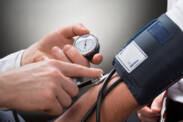
High Blood Pressure: Hypertension, Symptoms and Causes
Hypertension, as high blood pressure is professionally referred to, is the most common disease of the cardiovascular system. It affects up to 25% of the world's adult population. It is a significant risk factor for the development of acute or chronic problems.
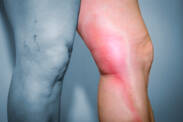
Thrombophlebitis of superficial veins: What is phlebitis and why does it occur?
Superficial thrombophlebitis is an inflammatory disease of the superficial veins. It mainly involves the veins of the lower extremities.

Thromboembolic disease: origin and how it relates to pulmonary embolism
Thromboembolic disease poses a risk of developing serious complications that threaten a person's life.

Heart failure: definition and causes
Heart failure: a condition in which the heart is unable to pump blood to the body and supply organs or tissues with oxygen and nutrients.

Carotid artery stenosis: what causes narrowing of the carotid artery, what symptoms does it have?
Narrowing of the carotid artery is a serious condition that can lead to impaired blood supply to the brain and even stroke. Atherosclerosis is not the only cause.

Pulmonary heart disease: What is Cor pulmonale, why does it arise and how does it manifest itself?
Pulmonary heart disease is the enlargement of the heart as a result of a lung disease. There is an acute and a chronic form.

Raynaud Syndrome: Causes of Reduced Blood Flow to the Fingers
Raynaud syndrome is manifested by episodes of reduced blood flow to end arterioles, most commonly the fingers and toes. The condition may indicate a more serious health problem, but not necessarily.

Post-thrombotic syndrome: What it is, why it arises and how it manifests
Post-thrombotic syndrome arises as a complication of venous thrombosis. This is a condition that can significantly affect the quality of life of the affected person.
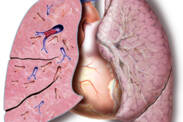
Pulmonary embolism: causes, symptoms, probability testing, and treatment
Pulmonary embolism (PE) is an acute condition in which blood vessels in the lungs become clogged. The most common cause is thromboembolic disease. A blood clot is released and travels through the vessels as an embolus. It clogs vessels. The massive form of PE is life-threatening.
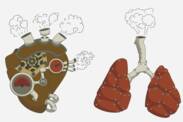
Pulmonary Hypertension: What It Is, Why It Occurs, Symptoms And Treatment
Pulmonary hypertension is a disease that limits the person's overall performance, quality of life and life expectancy. The cause may not always be clear or there might be another disease behind it.

Peripheral Artery Disease: Causes, Symptoms, Prevention and Treatment
Peripheral artery disease is a term for diseases of the arteries that supply various parts of the body. Blood vessels are usually damaged due to atherosclerosis, but it is not the only cause.
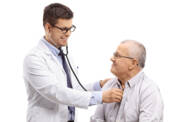
Heart valve disease: onset, manifestation and classification
Heart valve disease, or valvular heart disease, is a possible source of health problems such as fatigue, dizziness, fainting, palpitations, chest pain or shortness of breath. Heart valve failure can lead to heart failure.

Heart Tumors: What Is Malignant And Non-Malignant Heart Cancer? How does it manifest?
Heart tumors endanger human health and life due to several complications. They can grow directly from the heart or metastasize to it.

Aortic diseases
Aortic disorders are not common but are all the more serious. They can take place very quickly and acutely with life-threatening but also chronically.

Ischemic heart disease: Causes and symptoms of coronary heart disease?
Ischemic heart disease, also known as coronary heart disease, bothers us with insufficient blood supply to the heart. The main reason is the involvement of the heart, ie coronary vessels. It can be in acute or chronic form. The dreaded heart attack also includes the acute type.









